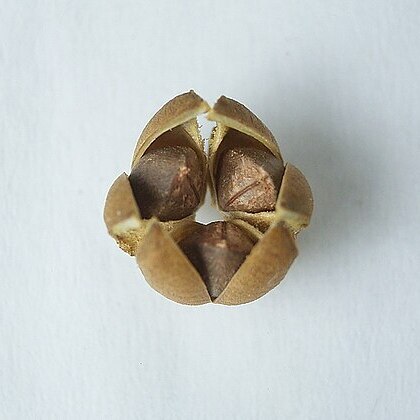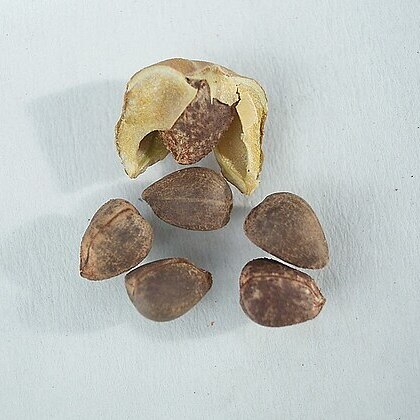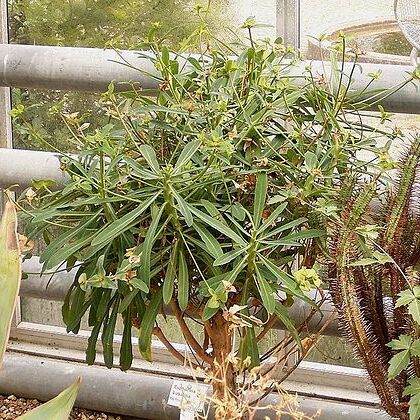A succulent shrub, 2-5 ft. high (Burchell), spineless; branches 5-9 lin. thick, terete, subtuberculate, glabrous, green; leaves alternate, scattered along the young branches, very spreading, 1 1/2-6 in. long, 1/4-1 1/3 in. broad, cuneate-oblanceolate or oblong-lanceolate, obtuse or subacute, apiculate, cuneately tapering to a narrow sessile base, not distinctly petiolate, slightly folded lengthwise, glabrous on both sides; peduncles solitary in the axils of the leaves, spreading or ascending, 1-6 in. long, 1/2-1 lin. thick, once forked or bearing an umbel of 3 simple or once-or twice-forked rays 1/2-2 in. long at the apex, with a pair or a whorl of 3 bracts at the base of the umbel and 1 or 2 very reduced alternate leaves below, withering and persisting for 2 or 3 years, glabrous; bracts 1/2-3/4 in. long, 1/2-2/3 in. broad, deltoid or deltoid-ovate, obtuse or acute, apiculate, subtruncate at the base, glabrous on both sides, green, usually edged with red; involucre sessile, 2 1/2-3 lin. in diam., cup-shaped, glabrous, with 5 glands and 5 subquadrate subentire or slightly toothed puberulous lobes; glands 1 1/4-1 3/4 lin. in their greater diam., transverse, oblong or very broadly cuneate-oblong, entire, green, like the bracts; capsule closely sessile, about 1/3 in. in diam., subglobose-trigonous, slightly narrowing upwards, glabrous; styles 3/4-1 lin. long, erect, united into a column for half their length, bifid at the apex, green; seeds 2-2 1/2 lin. long, ovoid, acute, slightly 2-keeled on the apical part, very minutely papillate-tuberculate or subreticulate to nearly smooth.
More
Bisexual, spineless, glabrous, sometimes unbranched shrub, 0.15-2.50 m high with persistent remains of peduncles, stem 10-25 mm thick, covered with widely spaced grey-green tubercles 1-2 mm long. Leaves 40-150 x 6-35 mm, broadly linear to oblanceolate. Cyathia solitary in axils of tubercles on peduncle 50-180 mm long, closely surrounded by plate of 2 larger bracts 10-20 x 10-15 mm (other rays and cyathia arising in their axils), bisexual, 6-8 mm in diam.; glands 5, green, outer margins entire or finely crenulate. Flowering time Oct.-May. Capsule 8-9 mm in diam., ± spherical, glabrous, sessile.



